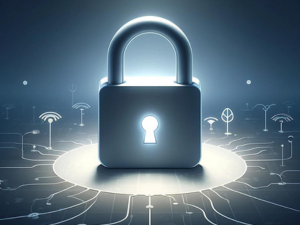 Have you ever seen movies featuring younger versions of actors through flashback scenes? Before 2017, these roles were typically filled by lookalike actors, but the advent of digital deepfakes has changed that. Today, voice and image restoration are often done through deepfake technology, and its use extends beyond Hollywood.
Have you ever seen movies featuring younger versions of actors through flashback scenes? Before 2017, these roles were typically filled by lookalike actors, but the advent of digital deepfakes has changed that. Today, voice and image restoration are often done through deepfake technology, and its use extends beyond Hollywood.
Even if your business doesn't produce video content, there are compelling reasons to be wary of deepfake technology. It has penetrated the corporate sector, being used for tasks such as replacing costly actors in commercials or avoiding frequent reshoots of a company leader’s biography.
To safeguard your business from malicious uses of deepfakes, continue reading to understand their potential dangers.
The Dangers of Deepfakes for Businesses
Deepfakes employ artificial intelligence to create, modify, or replicate media across various formats, including photos, videos, audio, and text. As these fakes become more realistic, the risk of misinformation grows. Imagine a scenario where a deepfake impersonates you as a business leader to spread false information or to steal valuable data.
The Identity Security and Access Management (IDSA) notes that identity-related fraud accounts for 90% of all cybersecurity breaches in large organizations. While these attacks require significant resources, making them more common against big or well-known companies, even small businesses are not immune to the threats posed by deepfakes.
Three Strategies to Protect Your Business from Deepfakes
Here are three effective ways to shield your business from the threats posed by deepfake technology:
1. Educate Your Employees About Deepfake Detection
The first line of defense against cyber threats is awareness. Train your employees on how to detect deepfakes. They should be on the lookout for signs such as:
- Audio and video anomalies during calls, like pre-recorded sounding responses or unusual silences.
- Unnatural speech patterns, voice changes, or odd phrasing.
- Suspicious requests or questions during conversations.
2. Implement Verbal Codes for Business Communication Verification
 One simple method to protect your business communications is to use verbal codes known only within your organization and to trusted partners. If a communicator cannot confirm the code when discussing sensitive information or transactions, it could indicate a breach. Rotate these codes regularly to reduce the risk of them being intercepted or guessed.
One simple method to protect your business communications is to use verbal codes known only within your organization and to trusted partners. If a communicator cannot confirm the code when discussing sensitive information or transactions, it could indicate a breach. Rotate these codes regularly to reduce the risk of them being intercepted or guessed.
3. Invest in Advanced Threat Detection Technologies
While many businesses already use basic security measures like multi-factor authentication—including fingerprint and facial recognition, passwords, and one-time codes—advanced threat detection technologies are essential. Implement security systems that utilize machine learning to stay ahead of threats, including those posed by deepfake technology.
As machine learning and artificial intelligence continue to evolve, so too should your business's defensive strategies against technologies like deepfakes. Integrated Technology Systems has the experience to help you navigate cyber threats and train your employees.
Call Integrated Technology Systems to develop a plan to secure your business and employees.
Integrated Technology Systems
6 East 45th Street, Suite 400
New York, NY 10017
212-750-5420
https://www.itsnyc.com



